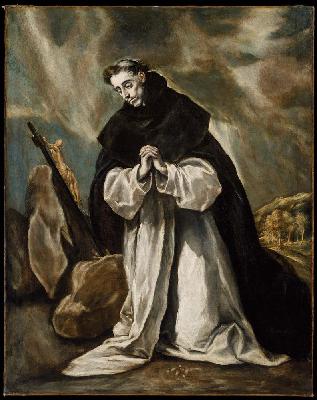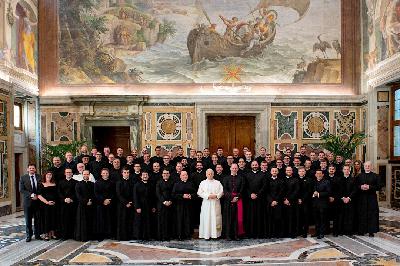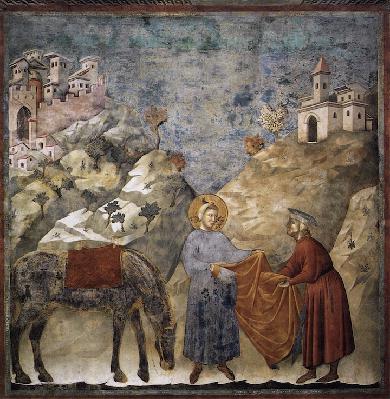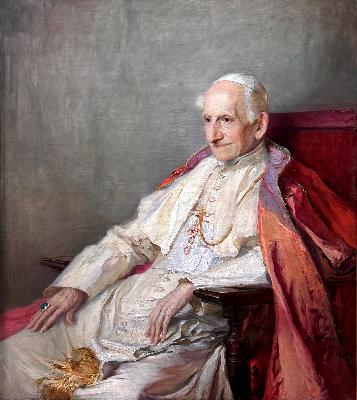Poetry as Prayer, and Prayer as Poetry
Update: 2025-10-22
Description
By Auguste Meyrat
Of all the arts, poetry is the most inherently religious. Although it is often defined by the use of figurative language, rhythm, and sound devices, what really separates poetry from prose is its subject matter, which transcends the literal and soars into the metaphysical. The techniques of poetry are secondary causes that serve the primary cause of exploring the deep nature of things.
Of course, in a post-Christian, postmodern, and increasingly post-literate culture, few people appreciate poetry, let alone read it. It isn't useful, and it pertains to immaterial reality. Even the designated apologists for poetry (i.e., English teachers like me) do a poor job of communicating the power and beauty of poetry, choosing instead to focus their efforts on more marketable verbal skills such as conducting product research and writing business emails.
Sad to say, this leaves people today, particularly people of faith, spiritually impoverished. Condemned to a prosaic understanding of the world, everything is consequently disenchanted, even religious devotion. Holy Scripture becomes inscrutable, the presence of God turns into absence, the sacred mysteries degenerate into irrational superstitions, and the devout life flattens into a mindless, if comforting, routine.
Sensing this problem, Catholic poet and former nurse Sally Read put together a delightful poetry collection 100 Great Catholic Poems. As she notes in her introduction, "No other literary genre is so concerned with truth - not only in the sense of writing about true things. . . but in the scalpel-precise rendering of things that humans cannot otherwise articulate." Though poetry offers a means for knowing God and His Creation more intimately, Catholics rarely consult their own poetic tradition and likely wouldn't even know where to start.
Thus, Sally Read went to the trouble of compiling some of the most excellent verses on the Catholic faith in one book. Beyond representing a brilliant range of experiences, reflections, and emotions that constitute the vast panorama of Catholicism, each poem stands on its own merits, prompting the kind of intense reading and thinking that one associates with prayer or contemplation.
Read takes care to narrow her definition of poetry to preclude the vast compendiums of prayers and hymns as well as poetic exclamations of faith. Although some of the first entries in her list by saints of the Early Church seem to violate this definition, they contain enough elements to be read as poems. In addition to including Our Lady's famous words in the "Magnificat," this sufficiently flexible definition allows Read to feature works from St. Augustine, St. Ambrose, St. Gregory of Nazianzus, and St. Clement of Alexandria.
While some of the names in the collection will be familiar to readers acquainted with the Western literary canon, the anthology's greatest virtue is the much-needed attention it gives to lesser-known figures, particularly those from early medieval Europe.
Despite the innumerable hardships of that time, or perhaps because of them, Irish Catholic monks wrote evocative and poignant accounts of the True Cross ("The Dream of the Rood"), romantic love ("Donal Og"), longings for home ("Columcille Fecit"), or their pet cat ("Pangur Ban").
The sheer diversity of expression is the other great virtue of this anthology, showcasing the very catholicity of Catholicism. No matter the age, the person, or the surrounding context of a particular poem, Christ's face appears.
Sometimes He is a hunter seeking His beloved as in St. Teresa of Ávila's "About Those Words, "My Beloved Is Mine," or a bird as in Gerard Manley Hopkins's "As Kingfisher Catch Fire." Or there's this in "Still Falls the Rain" by Edith Sitwell:
Still falls the Rain
At the feet of the Starved Man hung upon the Cross.
Christ that each day, each night, nails there, have mercy on us
On Dives and on Lazarus:
Under the Rain the sore and the gold are as one.
The sacraments are a...
Of all the arts, poetry is the most inherently religious. Although it is often defined by the use of figurative language, rhythm, and sound devices, what really separates poetry from prose is its subject matter, which transcends the literal and soars into the metaphysical. The techniques of poetry are secondary causes that serve the primary cause of exploring the deep nature of things.
Of course, in a post-Christian, postmodern, and increasingly post-literate culture, few people appreciate poetry, let alone read it. It isn't useful, and it pertains to immaterial reality. Even the designated apologists for poetry (i.e., English teachers like me) do a poor job of communicating the power and beauty of poetry, choosing instead to focus their efforts on more marketable verbal skills such as conducting product research and writing business emails.
Sad to say, this leaves people today, particularly people of faith, spiritually impoverished. Condemned to a prosaic understanding of the world, everything is consequently disenchanted, even religious devotion. Holy Scripture becomes inscrutable, the presence of God turns into absence, the sacred mysteries degenerate into irrational superstitions, and the devout life flattens into a mindless, if comforting, routine.
Sensing this problem, Catholic poet and former nurse Sally Read put together a delightful poetry collection 100 Great Catholic Poems. As she notes in her introduction, "No other literary genre is so concerned with truth - not only in the sense of writing about true things. . . but in the scalpel-precise rendering of things that humans cannot otherwise articulate." Though poetry offers a means for knowing God and His Creation more intimately, Catholics rarely consult their own poetic tradition and likely wouldn't even know where to start.
Thus, Sally Read went to the trouble of compiling some of the most excellent verses on the Catholic faith in one book. Beyond representing a brilliant range of experiences, reflections, and emotions that constitute the vast panorama of Catholicism, each poem stands on its own merits, prompting the kind of intense reading and thinking that one associates with prayer or contemplation.
Read takes care to narrow her definition of poetry to preclude the vast compendiums of prayers and hymns as well as poetic exclamations of faith. Although some of the first entries in her list by saints of the Early Church seem to violate this definition, they contain enough elements to be read as poems. In addition to including Our Lady's famous words in the "Magnificat," this sufficiently flexible definition allows Read to feature works from St. Augustine, St. Ambrose, St. Gregory of Nazianzus, and St. Clement of Alexandria.
While some of the names in the collection will be familiar to readers acquainted with the Western literary canon, the anthology's greatest virtue is the much-needed attention it gives to lesser-known figures, particularly those from early medieval Europe.
Despite the innumerable hardships of that time, or perhaps because of them, Irish Catholic monks wrote evocative and poignant accounts of the True Cross ("The Dream of the Rood"), romantic love ("Donal Og"), longings for home ("Columcille Fecit"), or their pet cat ("Pangur Ban").
The sheer diversity of expression is the other great virtue of this anthology, showcasing the very catholicity of Catholicism. No matter the age, the person, or the surrounding context of a particular poem, Christ's face appears.
Sometimes He is a hunter seeking His beloved as in St. Teresa of Ávila's "About Those Words, "My Beloved Is Mine," or a bird as in Gerard Manley Hopkins's "As Kingfisher Catch Fire." Or there's this in "Still Falls the Rain" by Edith Sitwell:
Still falls the Rain
At the feet of the Starved Man hung upon the Cross.
Christ that each day, each night, nails there, have mercy on us
On Dives and on Lazarus:
Under the Rain the sore and the gold are as one.
The sacraments are a...
Comments
In Channel
























